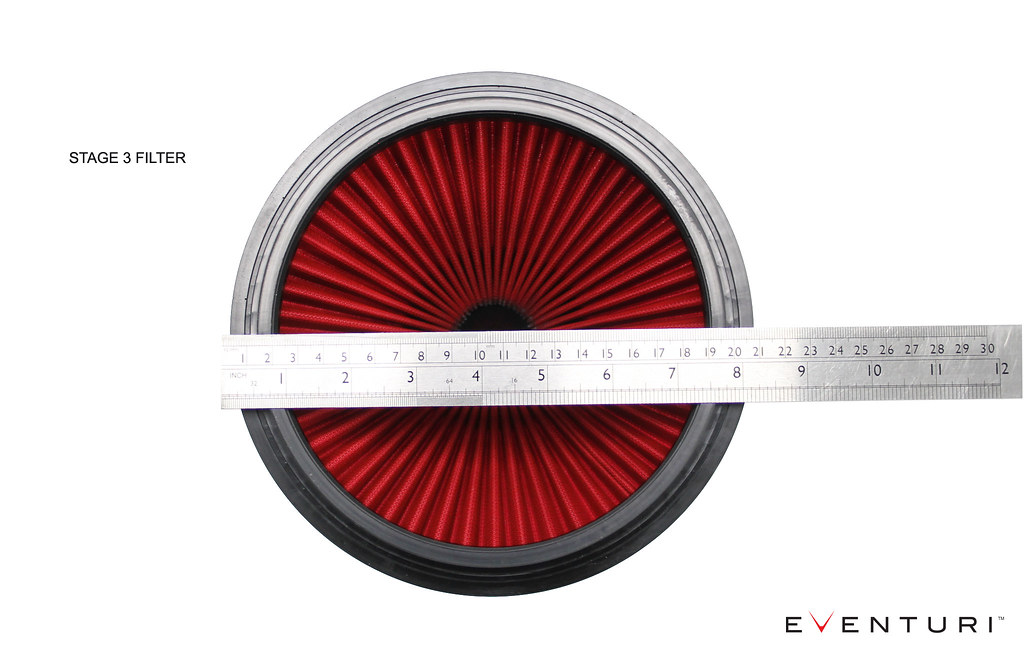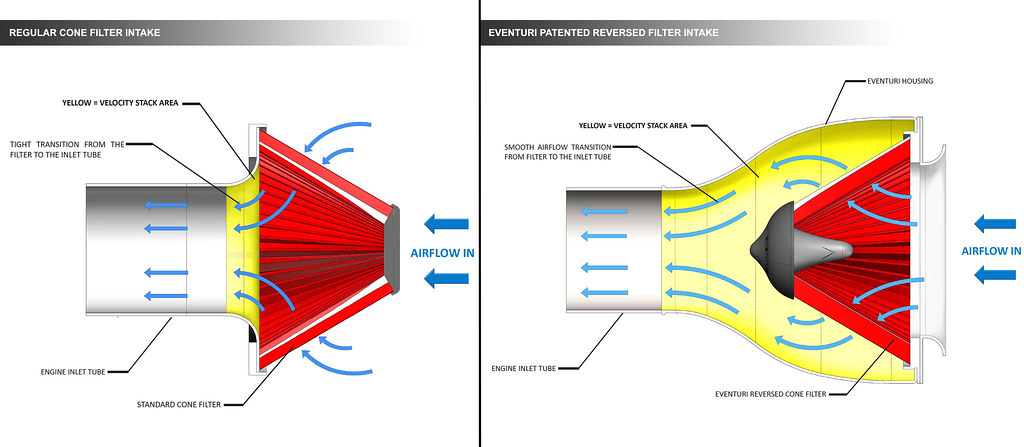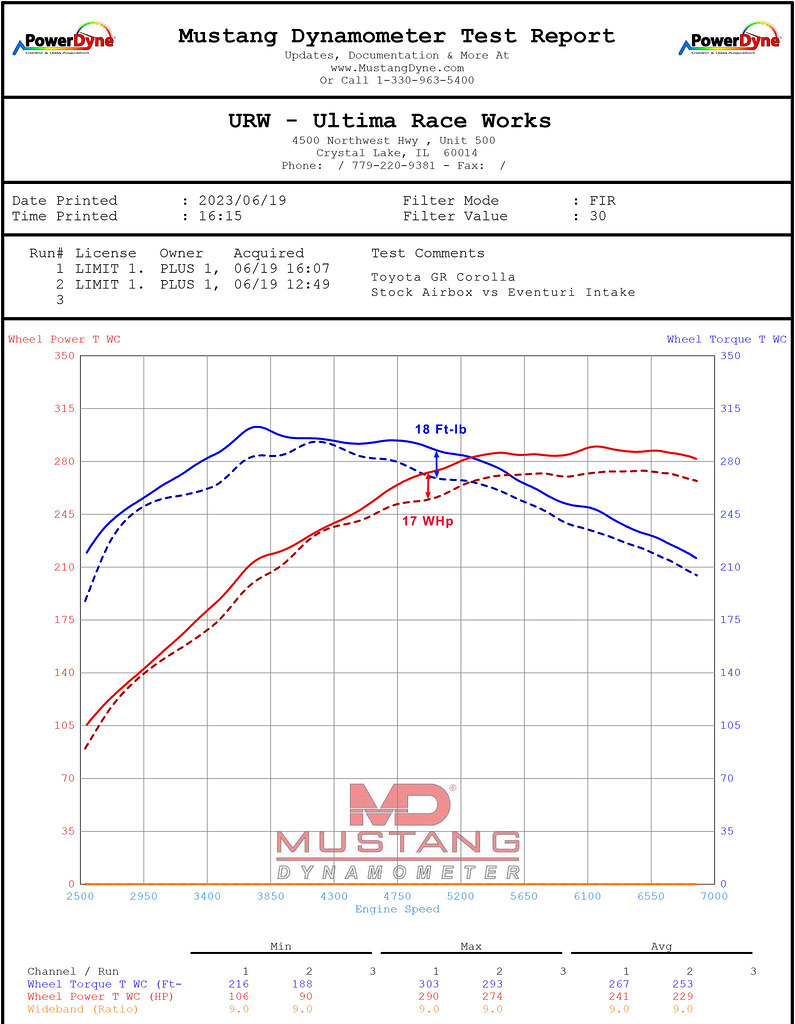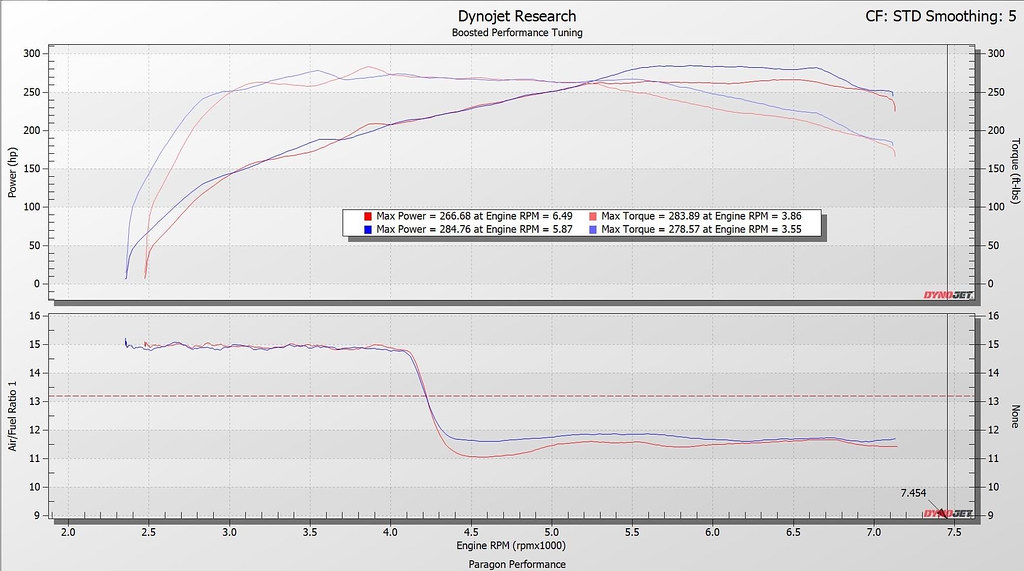Free Shipping On Orders over $250*
Eventuri Carbon Fiber Intake System | 2023+ Toyota GR Corolla
- Description
- Dyno Results
- Reviews
- Questions & Answers
Increase the power on your 2023+ Toyota GR Corolla by 15-17hp and 15-18 ft-lb of torque with this Eventuri Carbon Fiber Intake System. Available in a sleek matte carbon fiber or gloss options.
*Allow 3-4 Weeks for shipping while we restock the inventory
The Eventure Toyota GR Corolla Intake follows on from their GR Yaris system which was developed through extensive data logging of temperatures, flow rates and dyno testing. Since this is a turbocharged engine, heat and volume were the main considerations during development. This intake system has been developed to offer the highest possible flow rate whilst maintaining the lowest intake temperatures possible. Each component has been designed to provide the turbo with a smooth and free flowing path. By ensuring a sealed system we have improved on the IAT’s of the OEM airbox whilst at the same time increasing the internal volume to reduce the pressure drop and therefore reduce pumping losses of the turbo. In doing so the turbo is able to operate more efficiently and therefore reaches peak boost sooner to produce a net performance gain.
The filter itself has an outer diameter of 210mm or 8.3″ with a filtration surface area of over 130,000mm^2. The patented Venturi housing has been designed to provide the maximum internal volume possible for the GR Corolla and provides laminar flow to the turbo tube.
The Eventuri Difference
The GR Corolla Eventuri system uses their Patented Carbon fiber Housing which provides an aerodynamically efficient airflow path from the filter to the turbo. Not just another cone filter with a heat shield but a unique design which invokes the Venturi affect and maintains laminar flow conditions to reduce the drag on the turbo.
Part Numbers:
- EVE-GR4CR-CF-INT : Toyota GR Corolla Intake Gloss Carbon
- EVE-GR4CR-CFM-INT : Toyota GR Corolla Intake Matte Carbon

The Eventuri GR Corolla intake system consists of a number of components engineered to perform a specific purpose and fabricated to the highest of standards. We use 100% pre-preg carbon fiber with no fibreglass which means we can achieve a smooth internal surface to maintain smoother airflow. Here are the details for each component and the design ethos behind them:
Each intake system consists of:
- Carbon Fiber Patented Venturi Filter Housing with integrated MAF section
- Bespoke High Flow Dry Cone Filter
- Carbon Fiber Inlet Duct
- Carbon Fiber Rear Tube
- Laser Cut Front Air Scoop
- Custom Made Hardware
- Laser Cut Stainless Steel Brackets
- Custom EPDM Hose
- CNC Machined MAF Boss and Bracket Mounts
FILTER HOUSING ASSEMBLY
The filter housing comprises of our bespoke generation 2 filter, aluminium inlet cowl, stainless steel bracket and the integrated MAF section. The carbon pod shrouds the reverse mounted filter and smoothly shapes the airflow down to the MAF section which then connects to the rear inlet tube. This changes the flow path from the OEM airbox where airflow enters the front of the airbox, changes direction by 90 degrees to travel through the panel filter and then changes direction again by 90 degrees to move through the MAF section. Our system is a lot more direct with airflow entering the front of the filter housing and and moving into the MAF section without any abrupt direction changes. The result is a smoother path from the filter to the turbo inlet tube and therefore the turbo is able to function with less drag.
BESPOKE CONE FILTER
In order to achieve the highest flow rate possible we used our largest filter which has an outside diameter of 210mm or 8.3" and when flow tested with a housing using a 4" opening is able to flow up to 940 CFM at 28" H2O. The filter medium is ISO tested to ensure that filtration is in line with OEM standards and is also dry. The filter is constructed with our signature flow cones to aid in the Venturi housing principle.
PATENTED TECHNOLOGY
Our patented filter housing has a smooth reduction in cross sectional area as it shrouds the filter and tapers down to the tubing. This geometry invokes the Venturi effect where the airflow accelerates whilst maintaining laminar conditions. It can be thought of as a large velocity stack - below is a diagram to show the comparison between our patented design and a regular intake system. Our bespoke filters aid the airflow moving through the housings and allow for an even velocity profile as the airflow exits the housings. Further details can be read in the Technology and Filters pages.

CARBON DUCT
The duct feeds the filter housing with ambient airflow from the front bumper/grill section. We maintained as large a volume as possible all the way to the front of the engine bay and derestricted the front of the duct by creating an opening just behind the bumper where the bonnet would close. This area of the engine bay stays at ambient temperatures while the car is in motion through the help of our additional scoop and so the intake is able to draw in air without being restricted to the small opening on the slam panel. We did not extend the duct to the other side of the engine bay to use the second opening in the grill simply because of the abrupt flow angle and the restriction in space between the engine and the bonnet catch. Furthermore, using the second opening would stop cold air from entering the engine bay to assist with reducing overall heat soak. Finally the duct seals against the filter housing with an expanding rubber seal which allows for movement of the filter housing with the engine without letting hot air in.

REAR TUBE AND EPDM COUPLER
The rear tube has been developed through extensive CFD modelling to remove turbulence and maintain as smooth a path as possible. The OEM rear tube has a sharp internal bend radius and at high flow rates, this can cause unwanted turbulence which can affect the efficiency of the turbo. Several designs were tested in order to arrive at the most optimum shape which we then made from a high temperature carbon fiber. We redesigned the rear tube to allow for a smoother bend which also allowed for a more optimum positioning of the filter housing. The connection between this tube and the filter housing is achieved with a custom made EPDM coupler which allows for vibrations and movement of the engine.

FRONT SCOOP
The final component is a front scoop which sits behind the grill to direct ambient air upwards into the opening of the slam panel. This aids in keeping IATs low while the car is in motion.



Dyno Testing
Our GR Corolla intake has been independently tested by various reputable tuners. The first dyno chart is from Limit1 in the US. Several runs were done with the OEM airbox to get a repeatable result and then again with the Eventuri intake. Tests were done on the same day back to back. Results show an increase in torque and power across the entire RPM range - not just at the peak RPM, which is why the car feels more responsive and is able to accelerate faster through the gears.
Dyno Results Summary:
The second set of results are from Paragon Performance also in the US who tested the intake against the stock airbox on the same day using 91 octane fuel. The systems were tested several times on a dyno jet in both configurations to get a repeatable result. In this instance the addition of the intake hits the load limit and the ECU closes the throttle to bring the load back down after 6600 rpm. This only happened on the dyno and not on the road. All dyno runs were done with stock ECU software.
THIS ITEM IS NON RETURNABLE, ALL SALES ARE FINAL







